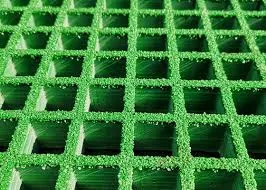
-
 Afrikaans
Afrikaans -
 Albanian
Albanian -
 Amharic
Amharic -
 Arabic
Arabic -
 Armenian
Armenian -
 Azerbaijani
Azerbaijani -
 Basque
Basque -
 Belarusian
Belarusian -
 Bengali
Bengali -
 Bosnian
Bosnian -
 Bulgarian
Bulgarian -
 Catalan
Catalan -
 Cebuano
Cebuano -
 China
China -
 China (Taiwan)
China (Taiwan) -
 Corsican
Corsican -
 Croatian
Croatian -
 Czech
Czech -
 Danish
Danish -
 Dutch
Dutch -
 English
English -
 Esperanto
Esperanto -
 Estonian
Estonian -
 Finnish
Finnish -
 French
French -
 Frisian
Frisian -
 Galician
Galician -
 Georgian
Georgian -
 German
German -
 Greek
Greek -
 Gujarati
Gujarati -
 Haitian Creole
Haitian Creole -
 hausa
hausa -
 hawaiian
hawaiian -
 Hebrew
Hebrew -
 Hindi
Hindi -
 Miao
Miao -
 Hungarian
Hungarian -
 Icelandic
Icelandic -
 igbo
igbo -
 Indonesian
Indonesian -
 irish
irish -
 Italian
Italian -
 Japanese
Japanese -
 Javanese
Javanese -
 Kannada
Kannada -
 kazakh
kazakh -
 Khmer
Khmer -
 Rwandese
Rwandese -
 Korean
Korean -
 Kurdish
Kurdish -
 Kyrgyz
Kyrgyz -
 Lao
Lao -
 Latin
Latin -
 Latvian
Latvian -
 Lithuanian
Lithuanian -
 Luxembourgish
Luxembourgish -
 Macedonian
Macedonian -
 Malgashi
Malgashi -
 Malay
Malay -
 Malayalam
Malayalam -
 Maltese
Maltese -
 Maori
Maori -
 Marathi
Marathi -
 Mongolian
Mongolian -
 Myanmar
Myanmar -
 Nepali
Nepali -
 Norwegian
Norwegian -
 Norwegian
Norwegian -
 Occitan
Occitan -
 Pashto
Pashto -
 Persian
Persian -
 Polish
Polish -
 Portuguese
Portuguese -
 Punjabi
Punjabi -
 Romanian
Romanian -
 Russian
Russian -
 Samoan
Samoan -
 Scottish Gaelic
Scottish Gaelic -
 Serbian
Serbian -
 Sesotho
Sesotho -
 Shona
Shona -
 Sindhi
Sindhi -
 Sinhala
Sinhala -
 Slovak
Slovak -
 Slovenian
Slovenian -
 Somali
Somali -
 Spanish
Spanish -
 Sundanese
Sundanese -
 Swahili
Swahili -
 Swedish
Swedish -
 Tagalog
Tagalog -
 Tajik
Tajik -
 Tamil
Tamil -
 Tatar
Tatar -
 Telugu
Telugu -
 Thai
Thai -
 Turkish
Turkish -
 Turkmen
Turkmen -
 Ukrainian
Ukrainian -
 Urdu
Urdu -
 Uighur
Uighur -
 Uzbek
Uzbek -
 Vietnamese
Vietnamese -
 Welsh
Welsh -
 Bantu
Bantu -
 Yiddish
Yiddish -
 Yoruba
Yoruba -
 Zulu
Zulu
pvc frp pipe
Understanding PVC and FRP Pipes A Comprehensive Overview
When it comes to modern plumbing and construction materials, Polyvinyl Chloride (PVC) and Fiberglass Reinforced Plastic (FRP) pipes have emerged as popular choices due to their durability, versatility, and cost-effectiveness. This article explores the characteristics, advantages, and applications of PVC and FRP pipes, highlighting why they are preferred in various industrial and residential settings.
PVC Pipes
PVC pipes are made from a synthetic plastic polymer known for its strength and resilience. They are lightweight, easy to install, and resistant to corrosion and chemical damage. These properties make PVC pipes an excellent choice for plumbing, drainage, and irrigation systems. Furthermore, they have a smooth interior surface that minimizes friction loss and enhances water flow.
One of the remarkable benefits of PVC pipes is their affordability. The manufacturing process is less energy-intensive compared to other materials, which translates to lower costs. Additionally, PVC is available in various sizes and dimensions, making it adaptable for a wide range of applications—from residential plumbing to agricultural irrigation systems.
FRP Pipes
pvc frp pipe

On the other hand, FRP pipes are composite materials made from a polymer matrix reinforced with fiberglass. This combination provides exceptional strength, lightweight characteristics, and high resistance to chemical attack. As a result, FRP pipes are ideal for industries that require highly corrosive fluids, such as chemical processing, water treatment, and oil and gas.
FRP pipes also exhibit superior flexibility compared to traditional materials like metal or concrete. This flexibility allows for easier installation and the ability to withstand vibrations and earth movements, making them suitable for diverse environmental conditions. Moreover, the smooth surface of FRP pipes ensures low-pressure drops, facilitating efficient fluid transportation.
Applications and Conclusion
Both PVC and FRP pipes find extensive applications across various sectors. PVC is commonly used in residential plumbing, sewage systems, and irrigation due to its lightweight nature and ease of use. In contrast, FRP is predominantly used in industrial applications where resistance to harsh chemicals and environmental factors is critical.
In conclusion, both PVC and FRP pipes offer distinct advantages depending on the specific requirements of the project. Whether it’s the cost-effectiveness and versatility of PVC or the strength and chemical resistance of FRP, these materials continue to redefine standards in piping solutions. As industries and households seek efficient plumbing systems, understanding the benefits of these pipes will help in making informed decisions for long-lasting infrastructure.









